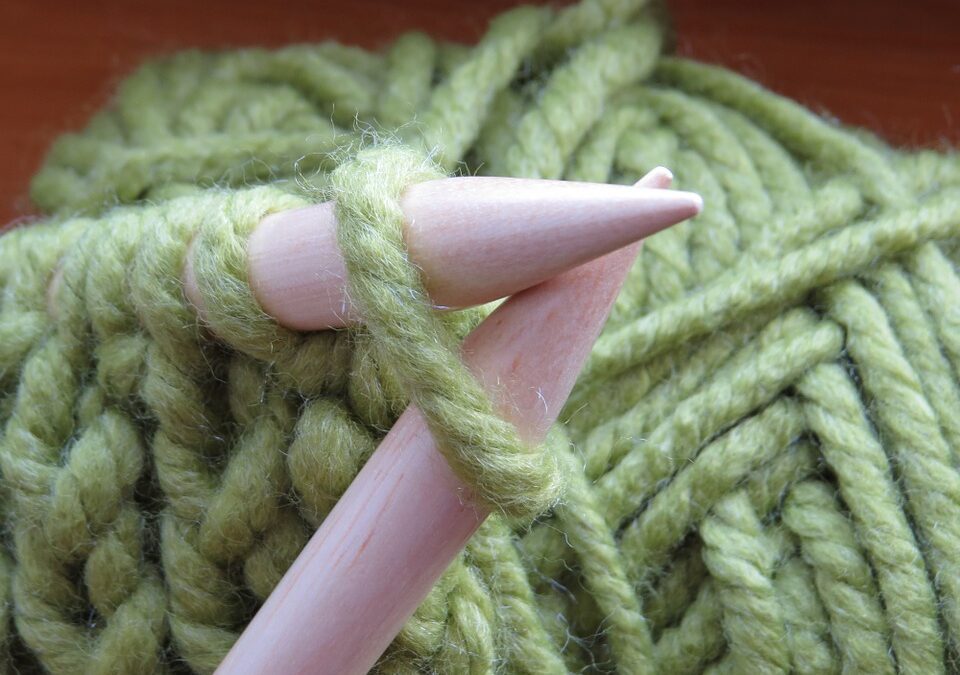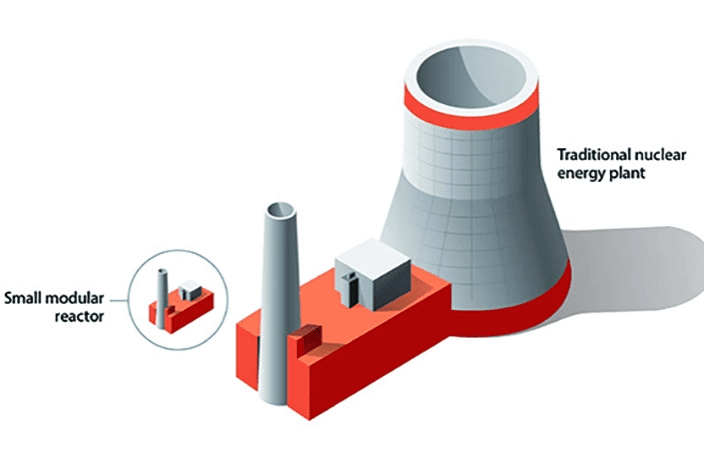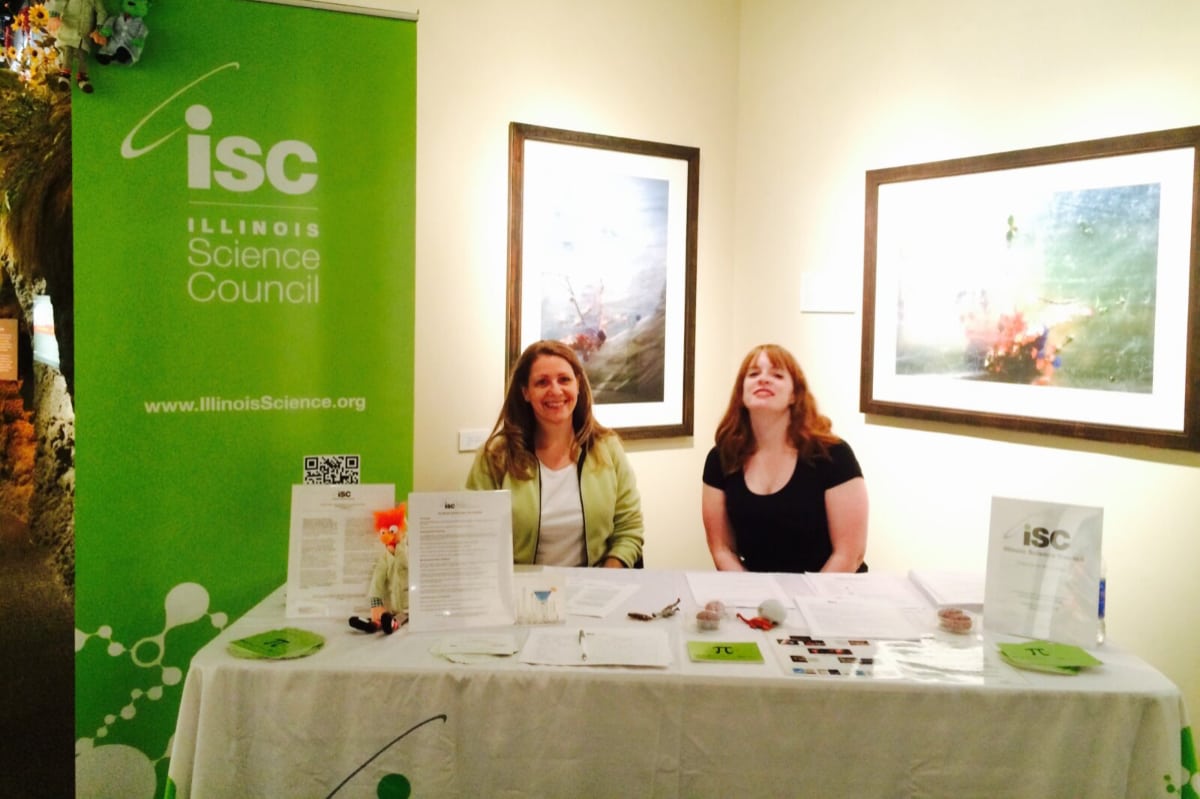My first memory of knitting wasn’t of my grandmother making a scarf by a roaring fire, though it did involve a stern matron overlooking my work as her needles clacked together, knitting a blanket as we took out our pencils and our Scantrons.
One of my high school math teachers, Mrs. Danielvich, loved knitting, and one reason for this was the complex problem solving behind it. No yarn was the same, no set of needles was perfect for all projects, and to complete a pattern, she often needed to perform various calculations to map out the different blankets and sweaters she worked on during our finals.
Or so she explained to us before our test began.
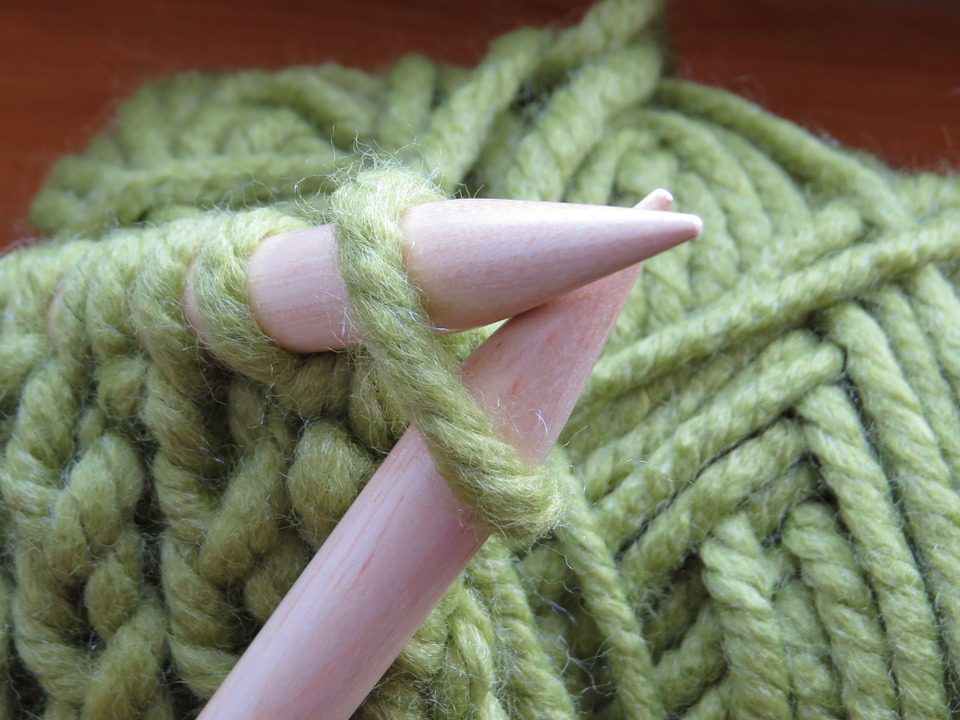 At the time, I rolled my eyes and dipped further into my Algebra II problems, disinterested in her chosen hobby, which I chalked up to her distinguished age and her profession as a math teacher. But a few months later, when I started my freshman year at University of Oregon, I found myself surrounded by students who purled and spun while studying for their Biology 202 exams. I was finally drawn into the craft, and I soon found myself knitting hats between class and my lab work at the Coastal Archaeology Lab.
At the time, I rolled my eyes and dipped further into my Algebra II problems, disinterested in her chosen hobby, which I chalked up to her distinguished age and her profession as a math teacher. But a few months later, when I started my freshman year at University of Oregon, I found myself surrounded by students who purled and spun while studying for their Biology 202 exams. I was finally drawn into the craft, and I soon found myself knitting hats between class and my lab work at the Coastal Archaeology Lab.
It’s not a secret that knitting lends itself to be a great hobby for any scientist. It allows creativity to shine (Riley et al, 2013), especially for those who are really into letting their geek flags fly. It’s a cheap hobby, (one can find needles and yarn for $5 or less at Goodwill, perfect for the poor graduate student or busy individual. It’s a portable hobby, easily stuffed into a backpack (or, perhaps, a lab coat, though I wouldn’t recommend it).
But, in addition to the ease in which knitting can fit in the average life of the working research professional, knitting also carries some real health benefits.
Knitting is Good for Your Health
The physiological effects of knitting can be surprising to those who have never taken up the art form before (arts and crafts are defined liberally here, folks). Studies have been shown that knitting can lower a person’s blood pressure, and in individuals with eating disorders, knitting has been shown to reduce stress levels (Clave-Brule et al, 2009). Knitters have been found to pick at their fingers and bite their nails less while they’re partaking in this craft, not only because their hands are busy, but also because of its aforementioned calming effect (Greer, 2008).
Forget the health benefits, you say. By now you’re probably wondering why such a bizarre hobby works. Because let’s face it–it’s twisting string together with two small rods–how could that possibly translate into anything useful?
Let’s start with the basics–first, you need wool. Today, yarn comes from all sorts of sources, ranging from the cheapest, factory made acrylic to the softest, most delicate musk oxen hair. But originally, we collected wool from the sheep and goats found throughout the Mediterranean, where, coincidentally, the first archaeological artifacts of knitting were located. The 11th century Coptic Egyptians’ craft? The sock! (Burnham, 1970).
No sheep is the same (with the exception of the clone Dolly, of course). In fact, like dogs, sheep come in several different breeds. The breed not only tells ranchers (and scientists, and knitters for the matter) what to expect from their offspring, but how much wool and the type of wool they will produce. With that being stated, wool and other animal fibers react the same way when faced with elements, as we will discuss below.
The Thick and the Thin of Yarn
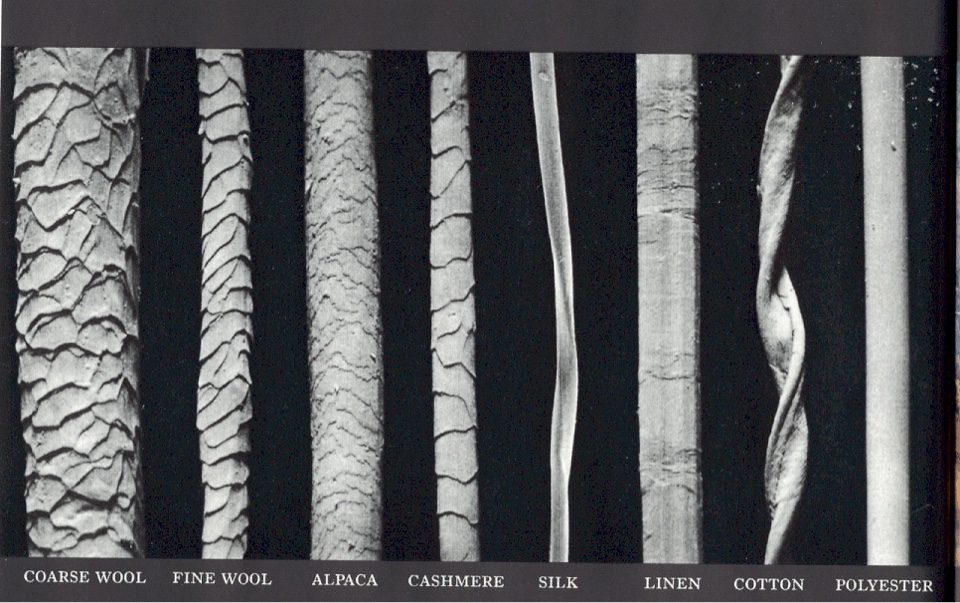
Electron Micrographs of Different Types of Yarn
First and foremost, not all yarn that you may see at your local knitting store is made from the same source – some are made from wool, and others are made from acrylic or cotton. Wool–mostly from sheep– feels different then other fibers like cotton because of its chemical composition. Wool, which comes from animals, of course, and it is mostly comprised of proteins and fat molecules. Meanwhile, cotton comes from a plant, and it is composed of cellulose, a complex sugar chain. The chemical compounds of the two are why knit cotton socks may feel more light, but wool socks may feel a lot more warm and stretchy. Wool’s chemical structure makes it more elastic, as well as helps it take in more water and make it more resistant to fire than most fibers (D’Arcy, 1986).
Icelandic sheep and other breeds from the North Atlantic grow thick, almost scratchy wool. This tough fiber make for coarse yarn that binds together when hit with rain and snow, making it ideal for protection. Should you observe this wool under a microscope, you will find the fibers fraying and clotting together when faced with especially wet and cold weather. Believe it or not, the borderline uncomfortable Irish sweater you may have worn during a South Side Irish parade is practical, because it traps in the heat of the wearer’s body while repelling precipitation, be it late March sleet or a badly poured Guinness from Cork and Kerry’s Pub.
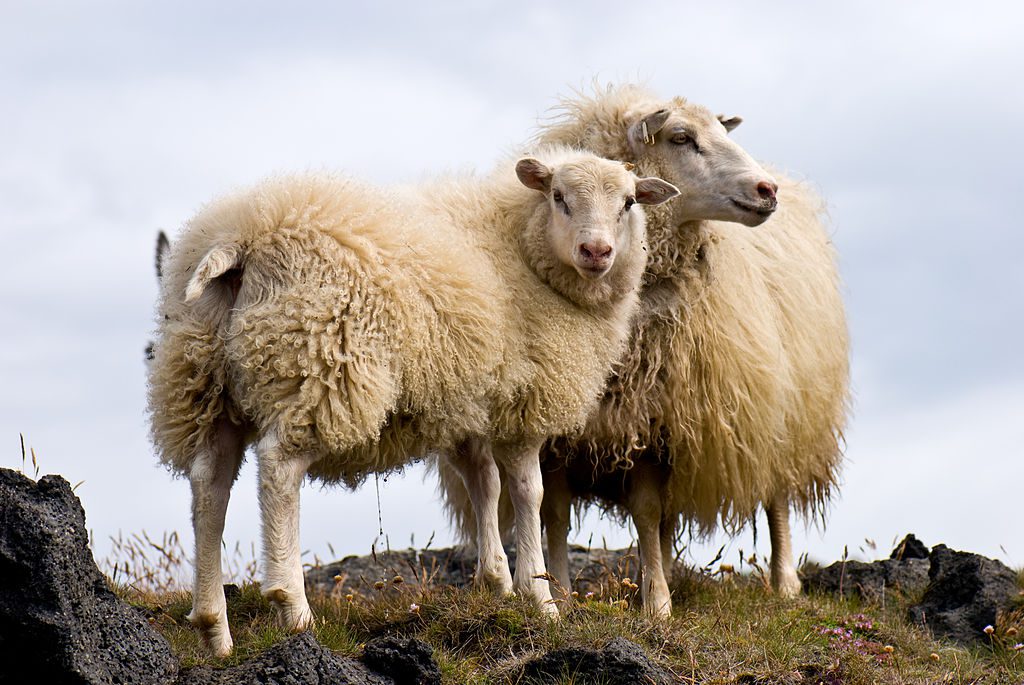
A pair of Icelandic sheep
Of course, you’ll probably notice this when move from the sleet of Western Ave to the warmth of Mrs. Ryan’s parade party. When you enter the warm house, the trapped water in your sweater will steam itself out of the wool, into the air–carrying over an evolutionary tactic that developed in ungulates’ wool to prevent the animal from losing body heat in colder climates.
Twist and Pull, Two and Fro
So, we’ve got a basic idea of what wool can do, as well as why knitting is physiologically up there as good as giving up smoking and taking up yoga.
Why knit?
You could help calm your busy mind, or you could engage in your own science experiment. Go out to your nearest store (or order from Amazon, I don’t judge), find a Youtube how-to channel, and test out the different feels between cotton and wool.
Then start adding up the different weights of them.
It would make my math teacher proud.
Sources:
D’Arcy, J. B., Sheep and Wool Technology, NSW University Press, Kensington, 1986 ISBN 0-86840-106-4
Dorothy K. Burnham. “Coptic Knitting: An Ancient Technique”. Pasold Research Fund, 1970.
Clave-Brule, M., Mazloum, A., Park, R. J., Harbottle, E. J., & Birmingham, C. L. (2009). Managing anxiety in eating disorders with knitting. Eating and Weight Disorders-Studies on Anorexia, Bulimia and Obesity, 14(1), e1-e5.
Riley, J., Corkhill, B., & Morris, C. (2013). The benefits of knitting for personal and social wellbeing in adulthood: Findings from an international survey. British Journal of Occupational Therapy, 76(2), 50-57.
Leapman, Melissa (2006). Cables Untangled: An Exploration of Cable Knitting, PotterCraft.
-
Kristen Vogt Veggeberg, Ph.D., is a science educator and content writer based in Chicago. Find her on Twitter @KrisVeeVee.
View all posts

